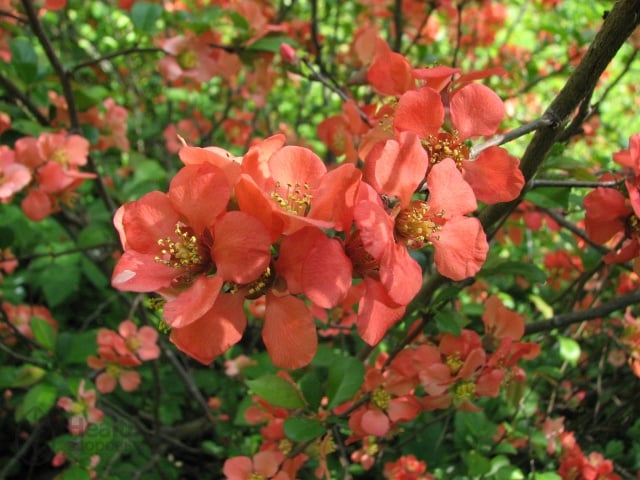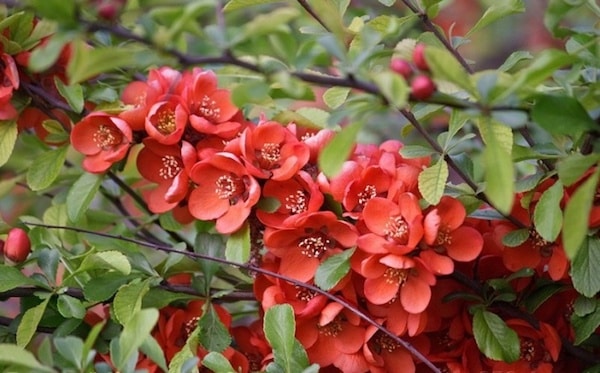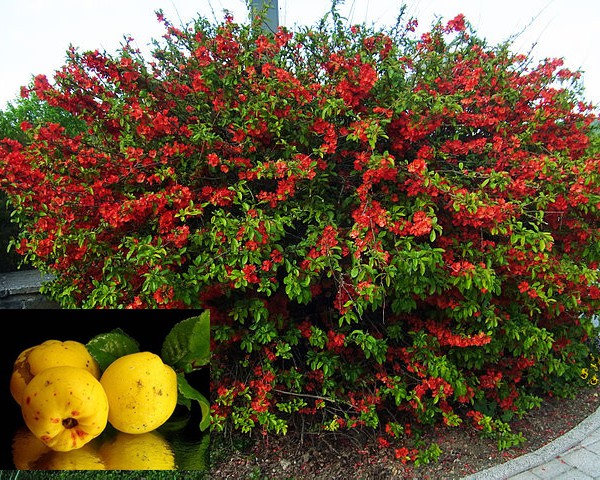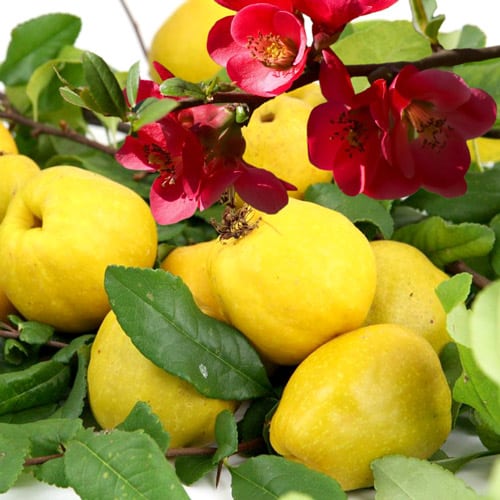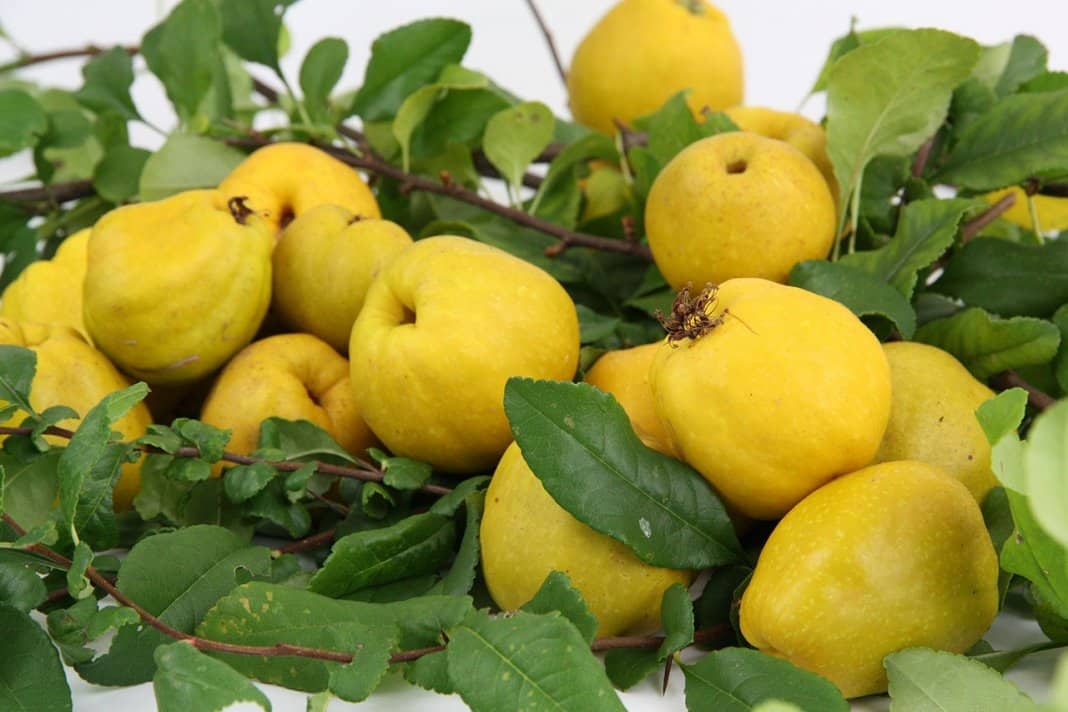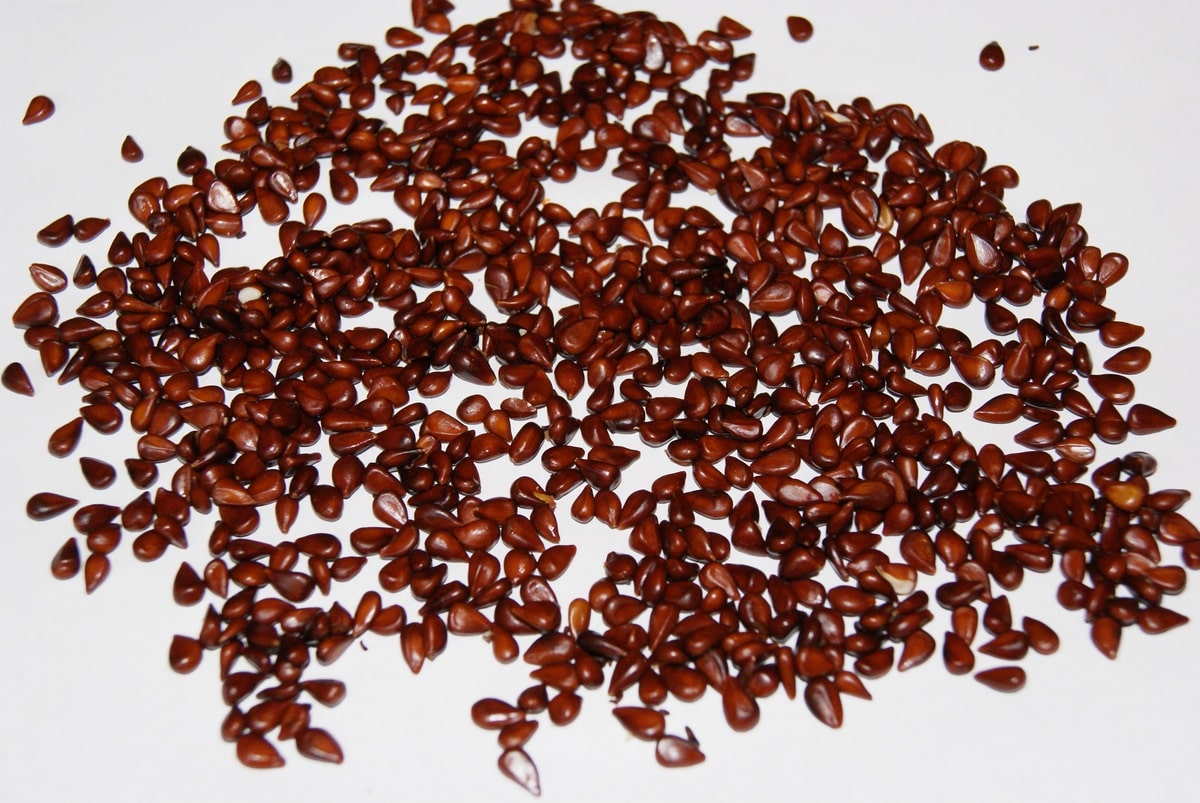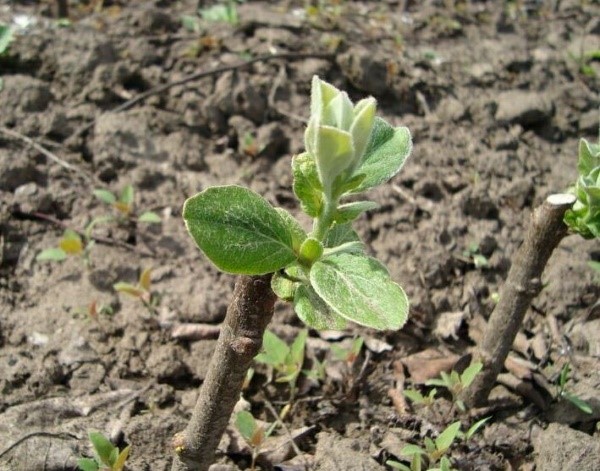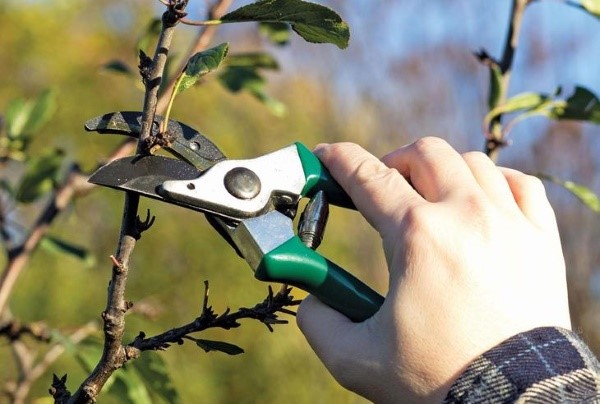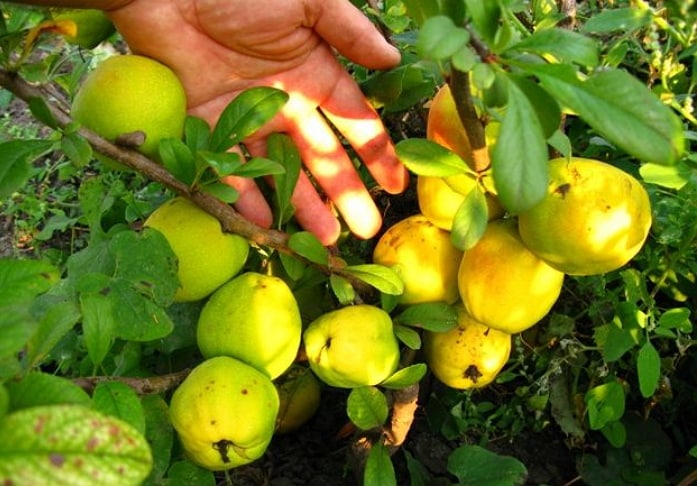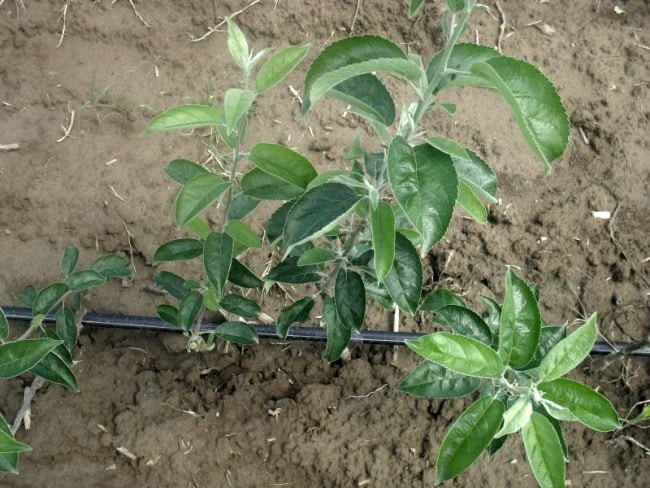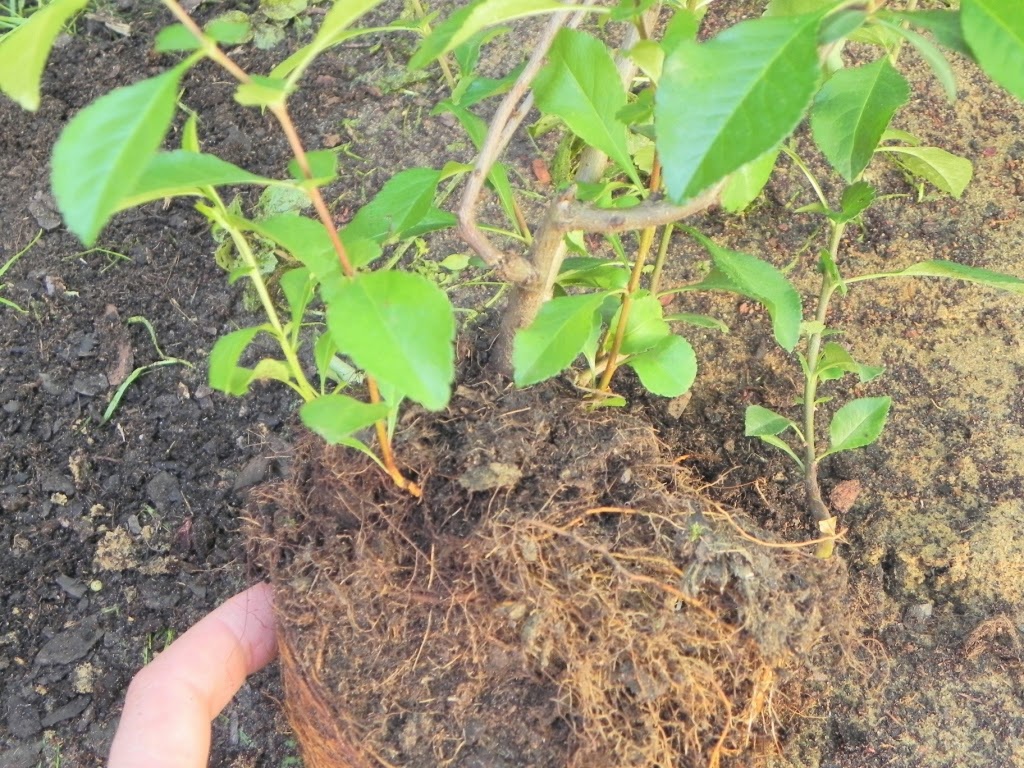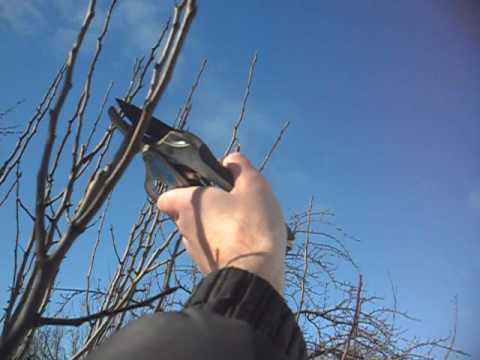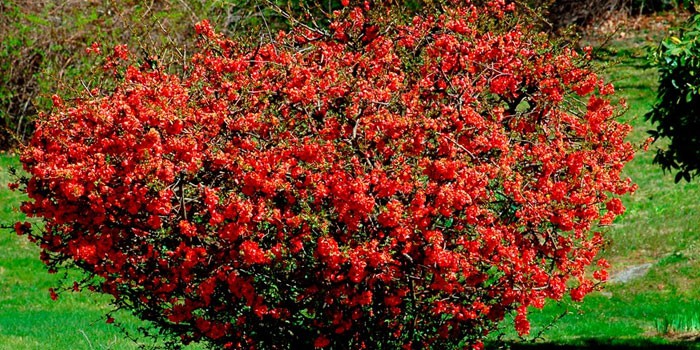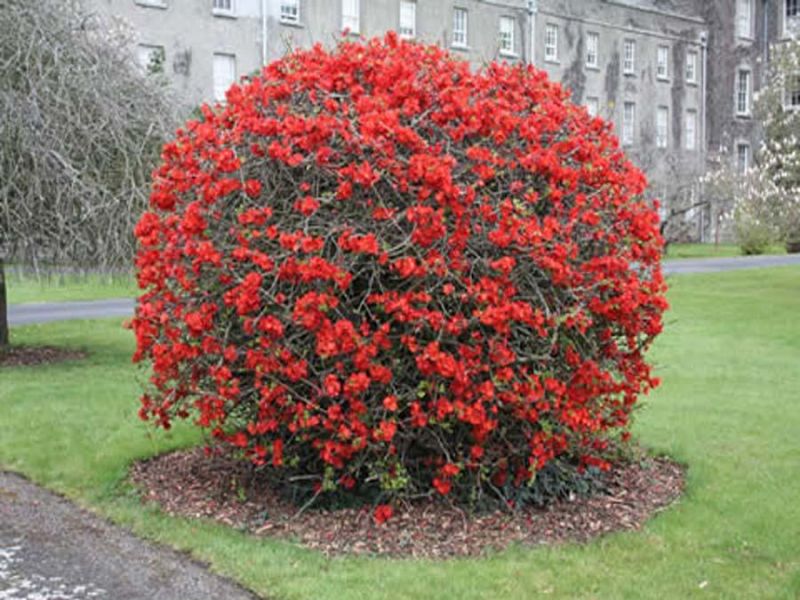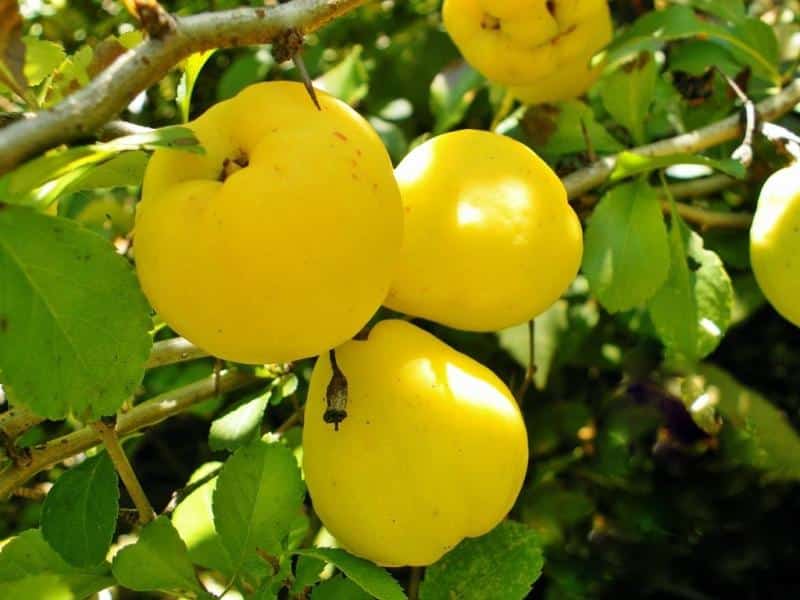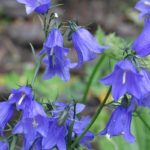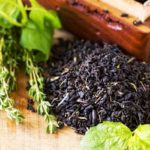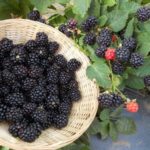Gardeners actively grow Japanese quince in their dachas. This is not surprising: the plant is decorative throughout the growing season. And the fruits are used not only in cooking, but also in folk medicine. More than 500 varieties of oriental wonder are known. But when choosing a plant for planting in the country, it is recommended to give preference to zoned species. Then the plant will delight the gardener with useful fruits.
- Characteristic features of culture
- External description
- Kusta
- Root system
- Productivity
- Useful properties and contraindications of quince fruits
- Where is it used?
- In medicine
- In gardening
- In cooking
- Reproduction methods for transplantation
- Seeds
- Cuttings
- Dividing the bush
- Horizontal layering
- Vaccination
- How to choose a variety for different regions of Russia
- Nuances of planting crops
- In the open ground
- In a greenhouse or greenhouse
- Features of agricultural technology
- Spring care
- Summer treatments
- Autumn care
- Preparing for winter
- Disease and pest control
- What problems do gardeners face?
- Popular varieties and their characteristics
Characteristic features of culture
Japanese quince is a relative of all the familiar apple and pear trees. In gardens it is used as an ornamental crop. Distinctive features of the plant:
- there are tree (up to 3 m) and bush (up to 0.6 m) forms;
- shoots are flexible, have thorns up to 2 cm long;
- the branches are densely leafy, the color of the leaves is emerald green;
- the plant blooms with pink-red, orange-red, white flowers;
- fruits with a diameter of 3-5 cm;
- fruit color is yellow-green or orange;
- the skin is dense, covered with a characteristic waxy coating;
- 1/2 of the fruit is occupied by the seed chamber.
The taste of the fruit is bitter-sweet, the flesh is dense and aromatic. Due to its rapid growth and decorative value, low bush quince is used in dachas to create hedges.
External description
Quince is easy to recognize by how the plant looks:
- long shoots are covered with dark brown bark;
- the bark has a red tint;
- leaves are elongated, blunt-pointed;
- flowers, up to 5 cm in diameter, have 5 large petals.
This plant belongs to the Rosaceae family.
Kusta
The shrub has a height of up to 0.6 m. The shoots are flexible, spiny, and heavily leafy. The length of the branches reaches 1 m. Often the branches lie on the ground, where they take root on their own. If left uncared for, shrub quince forms a continuous, prickly carpet.
Root system
Quince has a developed root system. The main root goes into the ground to a depth of 5 m.It is able to obtain water for the growth and development of the plant. The fibrous roots are located shallow below the soil surface. They are very vulnerable when loosened. It is recommended to pay special attention to the root collar. It should be located at ground level.
Productivity
With proper care, the plant will delight the gardener with fragrant fruits. Productivity depends on the quince variety. The fruits tolerate early frosts well. When to pick the fruit depends on the weather. Usually this is the end of September - beginning of October.
Useful properties and contraindications of quince fruits
Japanese quince contains a large amount of vitamins and minerals. They determine the beneficial properties of the plant:
- The amount of vitamin C is twice the daily requirement. Regular consumption of fruits strengthens the immune system.
- Iron makes fruits necessary for anemia.
- Magnesium and potassium strengthen the heart muscle and have a beneficial effect on hematopoiesis.
- Minerals speed up metabolic processes.
- Regular consumption of quince promotes urination.
- The fruits bind poisons and remove them: consumption is useful for food poisoning.
- Quince tea strengthens the body.
It is important to remember: the fruits of the plant have the ability to restore liver cells.
Where is it used?
The beneficial properties of fruits have ensured their use in various fields.
In medicine
Doctors prescribe chaenomeles as a primary or additional medicine for:
- flu and colds to strengthen the immune system;
- cough to increase expectoration;
- asthma to prevent attacks;
- anemia and blood loss to restore blood;
- liver diseases to restore damaged cells;
- poisoning as an astringent;
- kidney diseases as a diuretic;
- liver diseases as a choleretic agent.
But it is not recommended to prescribe chaenomeles treatment on your own: it is important to undergo an examination and find out compatibility with the medications you are taking.
In gardening
Gardeners use the plant to create hedges. The thorny plant forms impenetrable thorny thickets. Chaenomeles is decorative, therefore it is used for landscaping.
In cooking
The unusual taste of the fruit ensured their use in cooking. Chaenomeles produces:
- jam;
- candied fruit;
- compotes;
- jam;
- wine;
- liqueur.
The fruits can be eaten fresh or brewed into tea, like lemon.
Reproduction methods for transplantation
Chaenomeles you like is quite easy to propagate. Gardeners use various methods.
Seeds
At home, the plant propagates by seeds. They require long-term stratification for germination. Therefore, when sowing in the ground, choose the end of October, when the soil begins to freeze. How to proceed:
- cut the ripe fruit and carefully select the seeds;
- make a groove 5-7 cm deep in the ground;
- place the seeds at a distance of 15 cm from each other;
- sprinkle with soil and then mulch with a layer of 10 cm.
You can also grow chaenomeles from seeds at home. In this case, the seeds are wrapped in paper and kept in the refrigerator for 3-4 months. Then they are planted in a greenhouse. The soil is regularly moistened and the greenhouse is ventilated. After the seedlings appear, the greenhouse is opened.
Cuttings
A popular method of propagation is Chaenomeles. To do this, select semi-lignified shoots with 2-3 internodes. Cutting time is June. How to proceed:
- cut the cutting below under the bud at a distance of 1-1.5 cm from it at an angle of 45 degrees;
- cut the upper cut above the bud at a distance of 0.5 cm horizontally and treat it with paraffin or wax;
- cut the leaf plates by 1/2;
- dip the lower cut in a growth stimulator;
- place in a jar of water so that the liquid just covers the cut;
- wrap the jar with a bag with holes for gas exchange.
Place the greenhouse in a shaded, warm place.
Dividing the bush
Chaenomeles produces abundant root shoots. Some of it can be used for reproduction. Using a shovel with a sharp edge, dig up part of the bush and immediately plant part of the plant in a new place. After planting, it is watered and shaded. When the quince gives the first new leaves, the cover is removed. With this method of propagation, the daughter plant produces smaller fruits than the mother plant.
Horizontal layering
The shoots are bent to the ground and pinned to the soil with a metal or wooden bracket. At the point of contact, to speed up root formation, the bark is peeled off and sprinkled with a growth stimulator.
Vaccination
The variety you like can be grafted onto an existing plant in the garden. The most commonly used methods are: in the butt, in the split. It is best to carry out the operation in early spring, before sap flow begins, or in summer. The scion should have time to take root before winter.
How to choose a variety for different regions of Russia
Chaenomeles is a warm and light-loving crop. The part that is above the snow cover freezes out. In order to choose a suitable variety, it is necessary to take into account the frost resistance of the species. In the Moscow region, chaenomeles spends the winter without shelter. But at temperatures below -25 degrees, annual shoots and fruit buds freeze. The following performed well: Garnet Bracelet, Falconet, Scarlett, Cameo.
In Siberia, it is impossible to grow Japanese quince without shelter. The bush freezes. But some gardeners cultivate the plant in heated greenhouses. There, conditions similar to the climate of its homeland are created for Chaenomeles.The Urals have hot but short summers, and winters are long and harsh. Air humidity differs from required. But you can try growing some varieties with increased frost resistance with shelter for the winter. In Siberia and the Urals you can grow (with proper shelter) the Zubutlinskaya variety.
Nuances of planting crops
In order for a plant to please with its decorative appearance and produce a good harvest, it must be planted correctly.
In the open ground
Chaenomeles requires certain conditions for successful fruiting:
- The soil can be any (sandy, loamy, clayey, soddy-podzolic), but with a large amount of humus. The exception is alkaline soils: on them the plant develops chlorosis.
- The place should be sunny and warm. The ridges near the southern walls of garden buildings are perfect.
- In the garden, you should choose a place with deep groundwater: Chaenomeles roots easily rot.
Japanese quince planted in the right place grows well, bears fruit successfully, is not damaged by pests and does not get sick.
In a greenhouse or greenhouse
Gardeners in regions with cold winters are interested in: how to plant chaenomeles so that it grows and bears fruit? To prevent freezing, it is recommended to place the quince in a greenhouse or greenhouse. A heated greenhouse is installed at the dacha, in which the temperature is maintained from -5 to +5 degrees in winter. Additional shelter is provided in an unheated greenhouse. This double protection helps prevent freezing in winter.
Features of agricultural technology
Growing Chaenomeles is a simple undertaking. But you need to follow the advice of agronomists.
Spring care
After the snow melts, the main spring activity is pruning.After removing the winter shelter, it is necessary to cut out frozen and dry shoots. Then you should add mature compost or humus.
Summer treatments
In summer, it is recommended to apply phosphorus-potassium fertilizer after flowering. After the formation of the ovaries, the formation of the crown should be carried out. This event involves removing shoots crawling on the ground and cutting out weak branches. It is required to leave up to 20 fruit-bearing branches on a tree or shrub.
Autumn care
In the fall, it is necessary to apply mineral fertilizers: fertilizing for successful wintering of the tree.
Chaenomeles is also replanted in the fall. At this time, chaenomeles takes root better.
Pruning is also done in the fall. How to prune the plant during this period:
- creeping shoots are removed;
- those that are not ripe are shortened;
- the top is cut off for shelter for the winter;
- thinning pruning is carried out.
Autumn activities must be carried out for successful wintering of the plant.
Preparing for winter
Preparation for wintering includes autumn activities and plant shelter. Shrubs are covered with cardboard boxes, trees are wrapped in white lutrasil. Plant trunks are tied with spruce branches to prevent gnawing. It is recommended to ensure that the plants are covered with snow as high as possible.
Disease and pest control
Healthy chaenomeles rarely gets sick or is damaged by pests. But with excessive watering, its roots rot. When there is an excess of nitrogen in the soil, aphids appear on the leaves, and chlorosis develops on calcareous soils.
To prevent troubles, you should follow the rules of care. When attacked by pests, it is recommended to spray the plantings with insecticides.
What problems do gardeners face?
Gardeners often wonder: why doesn’t Japanese quince bloom? Causes:
- lack of sunlight;
- excess alkali in the soil;
- lack of nitrogen fertilizers;
- an abundance of creeping shoots;
- illiterate formative pruning;
- freezing of fruit branches in winter.
The lack of flowers in a plant may be a consequence of excessive soil moisture.
Popular varieties and their characteristics
Chaenomeles is the common name for the plants. Any variety can be named this way. Orange trail can withstand frosts down to -29 degrees. The shoots of the plant are long (up to 1 m) and have thorns. Blooms in May-June. Orange flowers are collected in brushes (5-6 pieces). The plant has a height of up to 1 m. Yellow fruits ripen in September. Their taste has a pineapple hue.
Value of the variety: fruit shrub and ornamental plant. Ubra (Rubra) is a tree up to 3 m high. Crown width is up to 2 m. It blooms with crimson flowers on last year's shoots. The plant's winter hardiness is low and it freezes without shelter.
Chinese has a significant habit. The bush grows up to 3 m in diameter. It has purple leaves in spring, emerald leaves in summer. The flowers are white or pink. The plant is too heat-loving: it freezes without shelter. Pink lady (Pink lady) is an ornamental variety. Has pink flowers. The value of the plant is that the tree grows low: up to 1.2 m.
Nikolin is a frost-resistant variety. The plant is very decorative: it has scarlet flowers. In May, the bush is strewn with crimson buds. Used for landscaping. Recommended for the Moscow region. Magnificent Crimson and Gold is the most decorative and compact variety. Bright orange flowers have yellow stamens. Blooms for 2-3 weeks. The plant is used to decorate the area.
Magnificent Nikolain (Nikolin) is a shrub up to 1.5 m. It is a frost-resistant variety. The plant is very decorative: it has scarlet flowers.The fruits ripen in September. Their color is green-yellow. The taste contains lemon notes. The plant is used for landscaping. Recommended for the Moscow region.
When blooming, Rubra grandiflora is striking in the color of its leaves. They are reddish on the plant. The shrub grows up to 2.5 m. Crimson flowers bloom in May. The fruits are yellow and ripen in September. Their weight is up to 90 g. Nivalis is a plant with a luxurious habit. The spherical bush has a diameter of up to 2 m. It blooms twice a year: the first time in May, the second in August. The flowers are white and fragrant.

